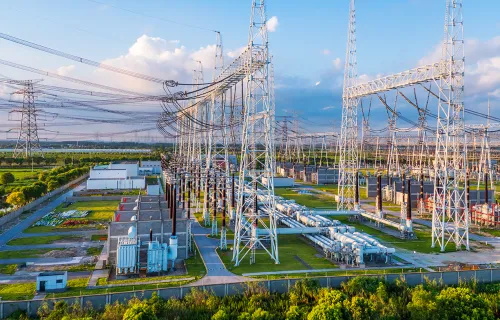Let’s get straight to it. The world has changed dramatically and many companies, including utilities, are struggling to keep up. It’s more than the move to renewable resources and an increased focus on reliability and safety. Utility leaders are staring down major changes in the way they deliver services to customers and wrestling with significant changes to their business models. The specifics of meeting energy demand have evolved quite a bit over the last decade, but the increased role of technology has grown exponentially. Consumers are becoming more and more engaged in managing their consumption patterns, and as a result, utilities are being forced to think differently about their operations, services, and consumer relationships. So, what does it all mean and how can utility leaders begin to think differently? Let’s take a closer look.
Changing relationships with customers
Some of the biggest changes are related to the way that utilities interact with their customers. Traditionally, utilities complied with regulations and operated an efficient supply chain that barely touched the customers (if things ran according to plan). When utilities engaged with customers, it was mostly with negative connotations (e.g., paying their bill or reporting an outage). This relationship is now much more complex. In fact, every residential customer who worked remotely during the pandemic became a micro-commercial customer in a digitally connected economy with the expectation of 99.99% availability. This shift in power consumption patterns and expectations, and its associated customer touchpoints, presents a whole new puzzle to solve.
To complicate things further, individuals and small businesses that have solar panels and battery storage often require power purchase agreements where utilities buy energy back from these small providers. This creates a tangled partnership between utilities and communities: a bi-directional relationship where money and energy flow in both directions. This is awesome form customers who obsess about optimizing usage and cost, but it’s not a simple relationship for the utility to support technologically.
This new relationship has also sparked prioritization strategies for customer engagement and satisfaction. However, numerous challenges stand in the way. Aging infrastructure and outdated operational models are a big barrier to change. An organizational culture built on constancy and minimal change is arguably the biggest barrier to meeting the challenges. How do you leverage emerging technologies and at the same time exert a massive effort to retire outdated, inefficient assets? How do you get it all done without a massive increase in the cost passed on to the customer? Well, we know one thing conclusively; you don’t meet 21st century challenges with 20th century approaches.
The digital value chain
Set technology aside for just one minute. Technology is ubiquitous. What if instead of thinking about which technology to invest in next you took some time to think about an outcome that would dramatically increase your customer engagement goals? For instance, rather than “I need a new Outage Management System” you thought “I want to proactively predict and prevent outages and use relevant data as a means of building customer trust and loyalty”. These are very different statements and drive very different organizational behavior. The first is an IT investment, the second is a business outcome.
The means by which you define, understand, and implement innovative business outcomes is the Digital Value Chain. Once you define your digital value chain as specific business outcomes, you then apply a logical combination of people, process, and (ultimately) technology to actualize the outcome. This change in approach is transformative. It changes the dialog, the company culture, makes processes more efficient, and guides better technology choices. It won’t happen overnight, and each company evolves in their own way; they either believe and therefore behave or behave until they believe (or some combination of the two).
Key considerations
While there are many barriers to transformation, there are some key factors that you should consider when thinking about lasting transformation:
- Identify the business outcomes you want to achieve and only then figure out how to use people, process, data, and technology to get there
- Focus on the end-to-end needs of the business including systems upgrades, change management, customer communication and market research
- Evaluate and study the data to better utilize insights and accelerate innovation to support the move to a more flexible and sustainable business model
As the digital revolution continues to shape the way modern utilities provide services and interact with consumers, companies must work to modernize and transform to keep up with customer demand, both for traditional utility service and provider/consumer engagement. Taking a broad view of the digital value chain can help provide a more holistic strategy for how utilities can meet the demands of today’s changing digital world





